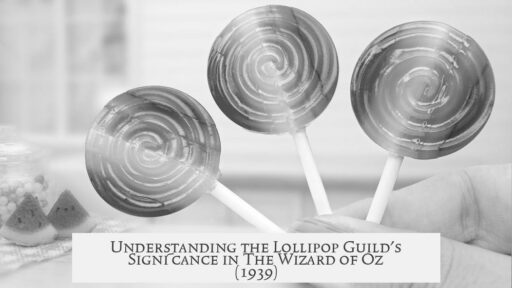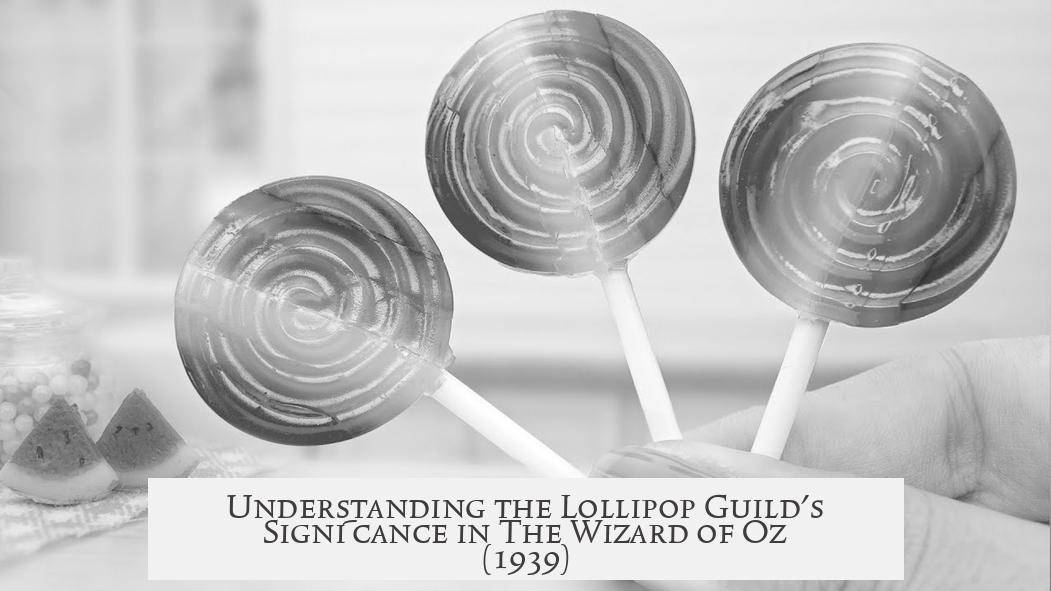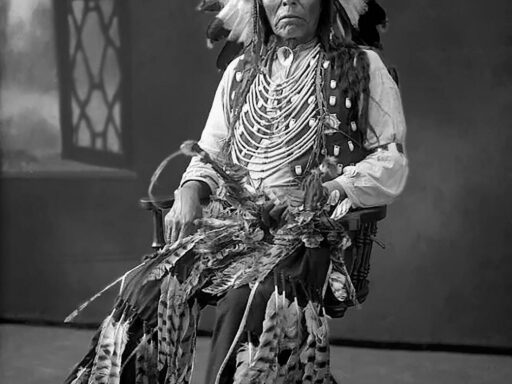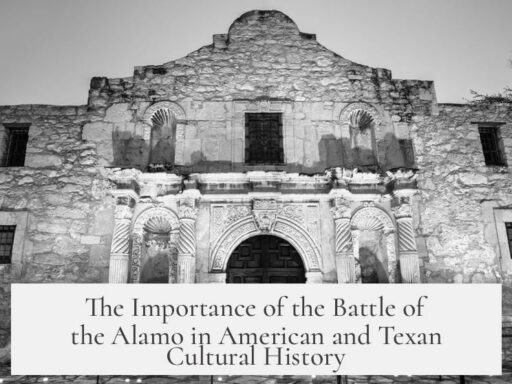In The Wizard of Oz (1939), the Lollipop Guild represents a group of diminutive, unionized workers from the fairyland realm of Oz. They serve as welcoming emissaries to Dorothy, reflecting both the otherworldly nature of Oz and elements of contemporary 1930s labor culture.
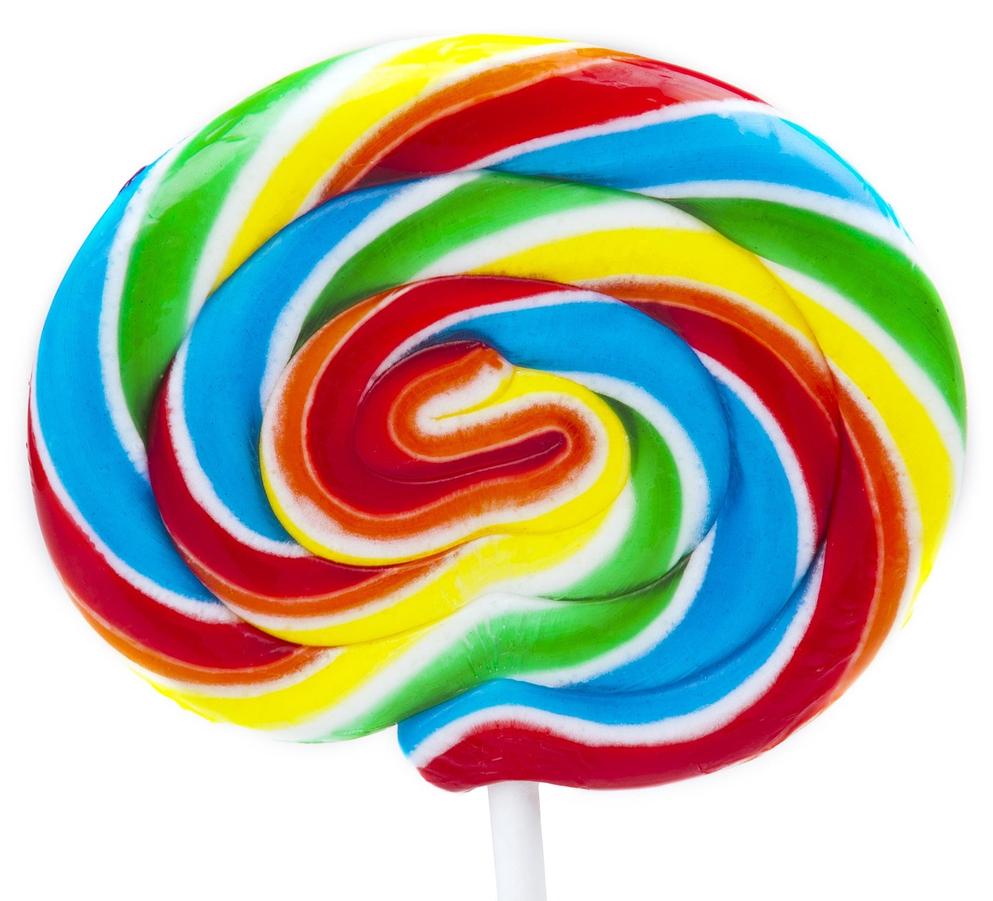
The Lollipop Guild comprises three small men who officially greet Dorothy upon her arrival in the Munchkinland. Their small size aligns with the fairyland motif deeply rooted in literature and folklore, where magical realms usually feature beings of reduced stature. In Baum’s original book and the film, this characteristic conveys the clear distinction between the ordinary world and Oz. The guild members are fully grown adults, despite their small size, which increases the sense of entering a unique, fairy-tale world.
Visually, the Guild may trace inspiration back to W.W. Denslow’s early illustrations, where three Munchkin men bow to Dorothy. Though the direct adaptation process is unclear, the film reimagines these figures as official representatives of the Munchkin workers. Their prominent lollipops add a whimsical, childlike touch, reinforcing the enchantment of the scene.
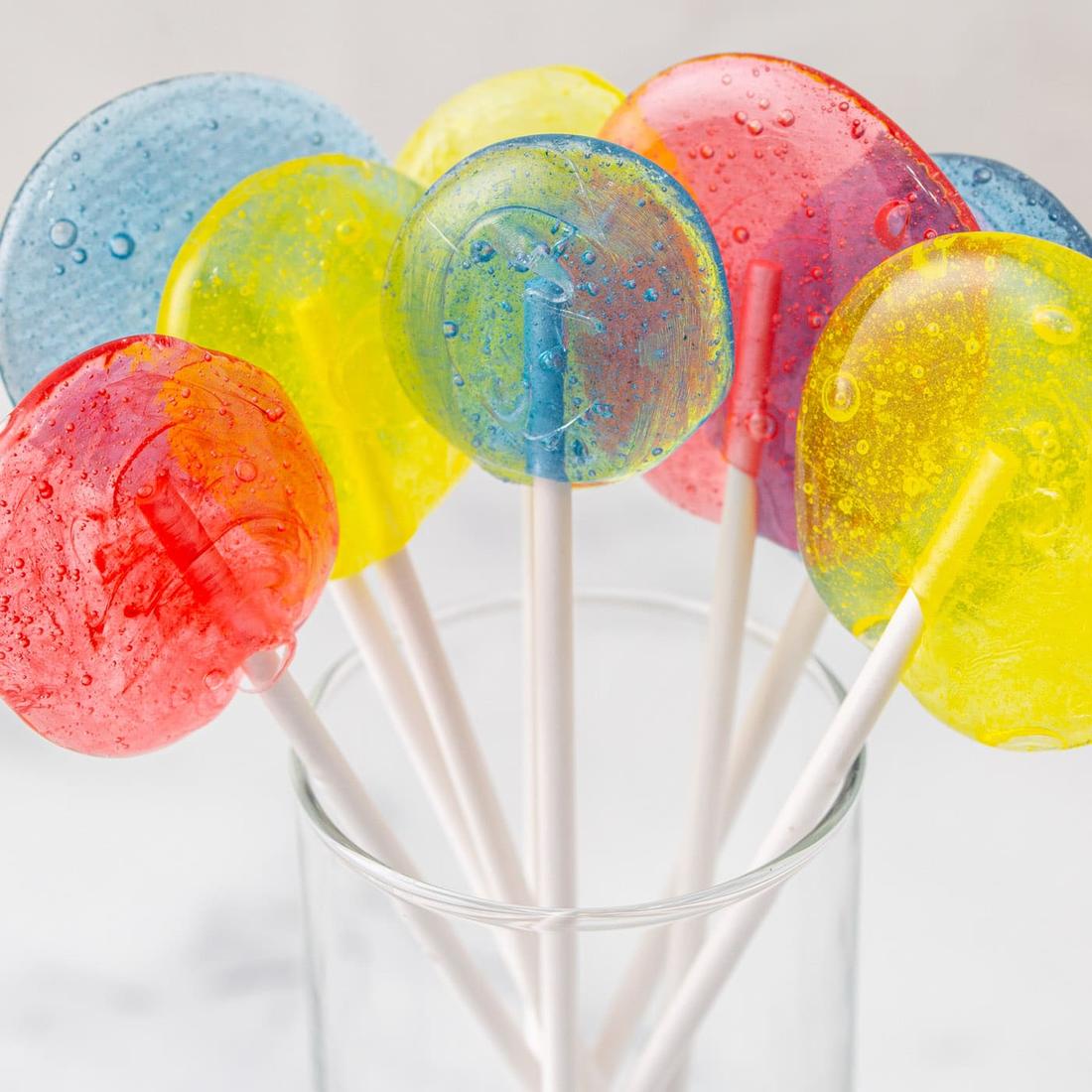
Beyond fantasy, the Lollipop Guild also reflects social realities of the 1930s. The Great Depression brought attention to labor unions and worker solidarity, especially among urban industrial workers. The Guild members’ tough demeanor and firm stance suggest they are unionized workers standing their ground. This portrayal resonated with contemporary audiences aware of labor struggles. Yet, they also display hospitality and grace, welcoming Dorothy with dignity. This balance highlighted the humanity and honor workers maintained despite hardships.
Some theories propose that the Guild comments on child labor due to the members’ small size. However, this view tends to oversimplify their role. The diminutive stature relates more directly to the fairyland setting rather than a critique on child labor practices.
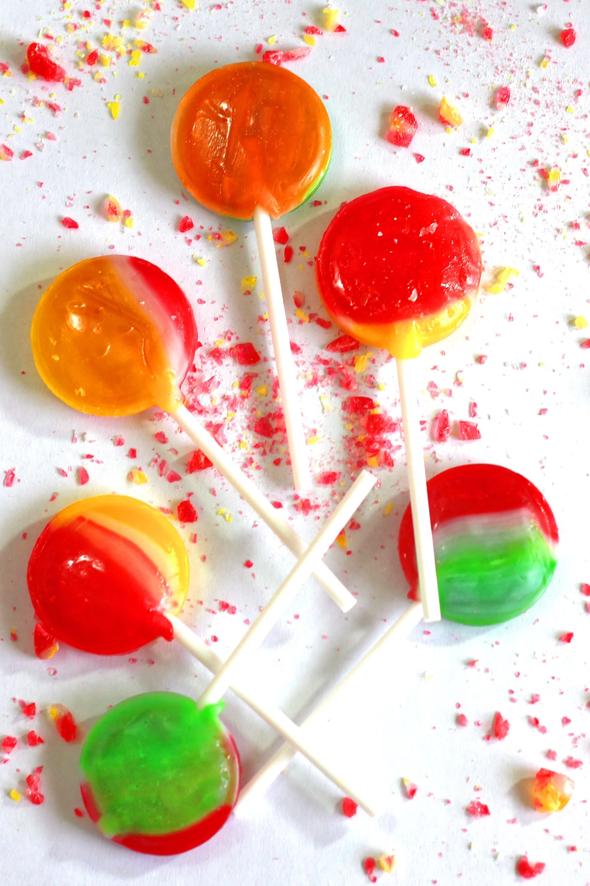
Key takeaways:
- The Lollipop Guild symbolizes otherworldly, small-statured fairyland inhabitants welcoming Dorothy.
- They also represent unionized, urban workers from the Great Depression era, combining toughness with grace.
- Visual inspiration likely came from early Munchkin illustrations by W.W. Denslow.
- Their size ties more to fairyland themes than critiques of child labor.
In The Wizard of Oz (1939), What Is the Context Behind the Lollipop Guild?
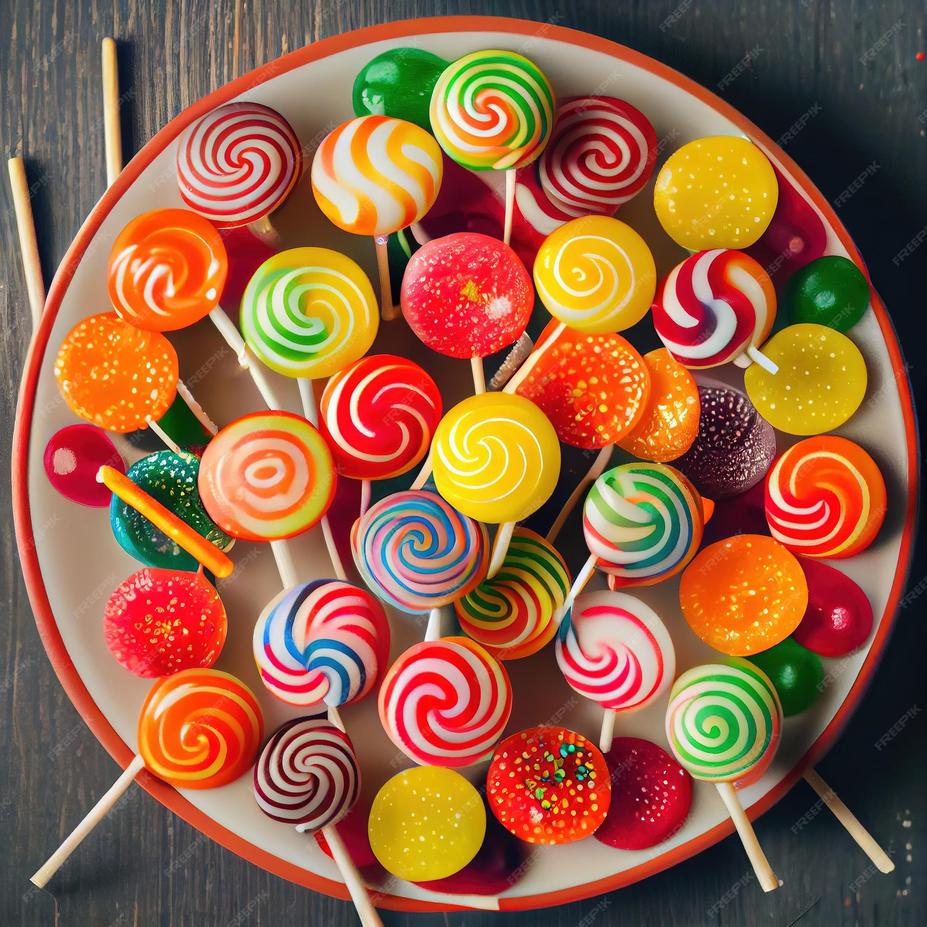
If you ever wondered who those three tiny gentlemen with giant lollipops greeting Dorothy in the 1939 classic The Wizard of Oz really are, here’s the scoop: The Lollipop Guild is not just a whimsical touch but a carefully crafted part of Oz’s fairyland charm with deeper cultural and historical layers baked right in. Let’s unwrap this colorful confection, shall we?
The Lollipop Guild members are small but mighty representatives from Munchkinland, welcoming Dorothy to the magical world of Oz. On the surface, they add charm and a splash of color to the scene. But behind their candy-coated façade lies a blend of literary tradition, artistic inspiration, and 1930s social commentary.
The Fairyland Roots: More than Just Tiny Folks with Candy
The story of The Wizard of Oz itself takes heavy inspiration from the fairyland motif found in literature and folklore. Stories of humans wandering into alternate magical realms are classics stretching back centuries—think Alice falling down the rabbit hole or Peter Pan whisking off to Neverland.
L. Frank Baum, the original author, made his Munchkins adults, albeit miniature ones. This was no accident. Their small size served as a visual cue: Dorothy had landed somewhere utterly different and magical, a land where the ordinary rules of the everyday world no longer apply. In the film, Judy Garland’s stature enhanced this effect, making the Munchkins appear even smaller, emphasizing their otherworldliness.
The Lollipop Guild fits neatly into this wonderland tradition, embodying that blend of whimsy and strangeness you’d expect from a fairyland adaptation. They’re tiny, vibrant, and, yes, they carry lollipops—props that underscore the sweet, childlike atmosphere of Oz’s residents but also mark them as unique and memorable emissaries of their world.
Visual Inspiration: Who Gave Life to the Lollipop Guild?
Fans of the film might be surprised to learn that the Lollipop Guild’s precise appearance might trace back to early illustrations by W.W. Denslow, Baum’s original book illustrator. There’s an illustration depicting three Munchkin men bowing in welcome to Dorothy. This image is a probable inspiration for how these characters made the leap from page to screen, although how exactly the filmmakers adapted it remains a bit of a mystery.
Their quirky costumes and distinct personalities suggest a creative blend of Denslow’s artistry and Hollywood’s flair for visual spectacle. The lollipops themselves? Likely a film invention to emphasize innocence and sweetness, but one that stuck with audiences to this day.
The Great Depression Lens: Tough Times Meet Fairy Tales
Now here’s where things get juicy: the historical context. The Wizard of Oz premiered in 1939, deep in the shadow of the Great Depression. During this era, issues around labor and unionization were front and center in the American consciousness. The Lollipop Guild, when viewed through this lens, appears less like mere whimsy and more like a nod toward urban, industrial union workers — hard-bitten, proud, and not ready to back down.
Think about it: the Guild members are small but uncompromising. They stand firm and show respect, greeting Dorothy with a cordial but firm welcome — a symbolic gesture of worker solidarity and the dignity even the hardest times could not erode. The scene subtly acknowledges the strength and humanity of unionized workers during one of the toughest economic periods in U.S. history.
So while these mini gentlemen carry oversized candies, they also carry the weight of working-class dignity. The tough-as-nails but gracious demeanor they show to Dorothy resonates with contemporary audiences of the 1930s, who would have immediately recognized these traits. They might seem cute and candy-coated, but they are also emblematic of a serious social reality wrapped in gingerbread charm.
Common Misinterpretation: Is It About Child Labor?
Some online theories claim the Lollipop Guild symbolizes child labor. That’s tempting to believe because of their small size and their confectionery props. However, this is likely a simplistic reading. Munchkins in Baum’s story and the film are fully grown adults, just miniature. Their small stature is rooted more in the fairyland motif, not an allegory on child labor.
The idea of child labor isn’t entirely absent from the 1930s cultural landscape, but this does not appear to be the filmmakers’ intention with the Lollipop Guild. Instead, their small size helps highlight the fantastical nature of Oz and contrasts Dorothy’s Kansas life with this strange new world. They embody wonder more than warning.
Bringing It All Together: What the Lollipop Guild Really Represents
So the Lollipop Guild is much more than a cute musical number or a candy-themed welcome committee. They symbolize:
- Oz’s fairyland strangeness and literary tradition of magical realms populated by tiny folk.
- A creative adaptation inspired by original illustrations by W.W. Denslow, blending art and film innovation.
- A subtle but poignant nod to the industrial union workers of the Great Depression era — proud, tough, and welcoming with dignity.
- The film’s broader theme that “we’re not in Kansas anymore,” a journey from reality into a world where anything can happen.
Next time you see those three iconic munchkins step forward with their oversized lollipops and tough-guy attitudes, remember: they carry the sweet charm of fairy tales and the hard steel of union solidarity all in one. It’s storytelling that works on multiple levels, a tiny trio with a big cultural punch.
Final Thought
Isn’t it fascinating how a brief song-and-dance number can reflect a world bigger than itself? It makes you wonder what other buried meanings lie beneath the surface of classic movies. What if your next favorite scene has a story calling for a closer look? Until then, keep your eye on the lollipops—they might just be sweeter than you thought.
